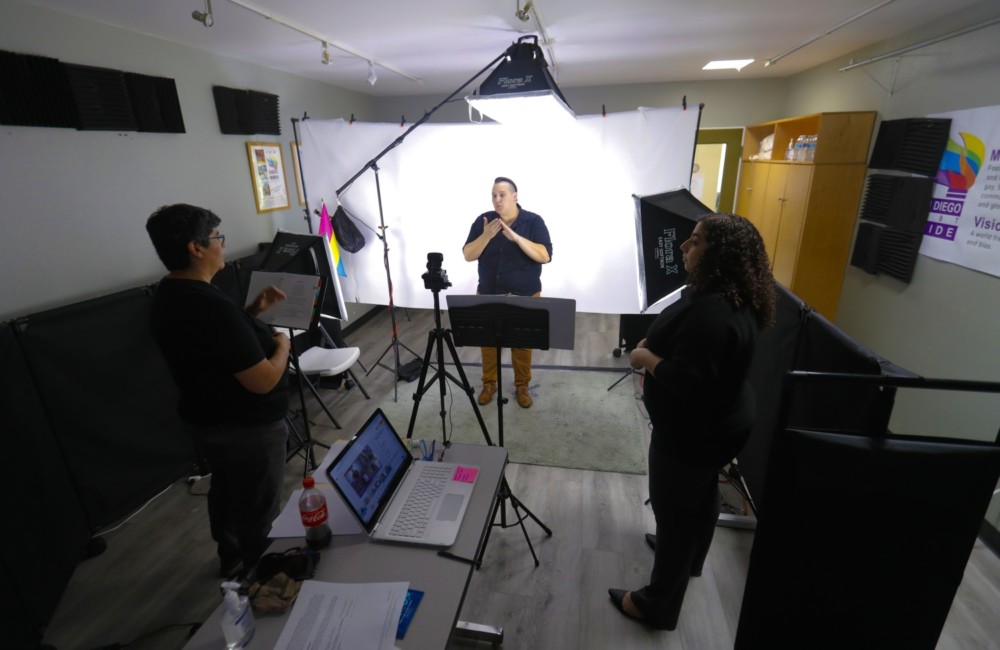By Cindy Krischer Goodman
The Miami Herald
A few years ago, when Miami attorney Paul Singerman received a hostile email from opposing counsel, he would react with an immediate terse response.
Not anymore. “The first thing I do is nothing,” he explained. Then, he said, he takes a deep breath, processes both his mental and physical reaction, and thinks carefully about how to stop the negative dynamic taking shape.
For Singerman, reflecting before reacting is the first step in practicing mindfulness, a stress-busting technique quickly spreading in workplaces across the country.
In the rush to accomplish multiple tasks or respond to job pressures, people often lose connection with the present moment. They stop being attentive to what they’re doing or feeling, and react from a place of stress. Mindfulness is the practice of focusing awareness on the present moment.
Teaching and encouraging mindfulness in the workplace has become a part of corporate efforts to reduce the stresses that can lead to burnout. Increasingly, the practice has gone mainstream, buoyed by the recent endorsements of CEOs, educators, actors and politicians who link mindfulness to improved psychological and even physical health.
Singerman said not only is he working on mastering mindfulness, his law firm, Berger Singerman, has sponsored workshops for clients, employees and colleagues. “I really believe mindfulness can make you more effective and enhance your prospects for success,” he said.
Singerman’s own experience with mindfulness has been cultivated over 2 years and has helped him become a better listener and more observant person, he said.
Businesses have bottom-line reasons to embrace it. Using mindfulness at work can make for a happier employee, according to Sharon Salzberg, author of the book “Real Happiness at Work: Meditations for Accomplishment, Achievement and Peace.”
Salzberg believes mindfulness can be applied in any career and says once an employee trains his mind, all kinds of conscious moments of awareness start seeping into the workplace.
For example, practicing mindfulness at work could be pausing and planning before picking up a phone, or taking a deep breath and focusing on the desired outcome during a contentious meeting. “It’s a great tool for coming back to the moment and remembering your intention,” she said.
According to the World Health Organization, the cost of stress to American businesses is as high as $300 billion, a cost estimate that includes health care and lost productivity because of diabetes, high blood pressure and other illnesses. For businesses, stress reduction and mindfulness have become a key part of wellness efforts.
Mindfulness programs in the workplace typically involve multiple sessions that teach meditation techniques, such as controlled breathing and bringing thoughts back to the present. They also include exercises for toning down mental chatter and improving listening skills. Employees learn how to apply the techniques in their daily routines on the job and in their personal lives.
At Aetna, more than 48,000 employees have access to three different wellness programs that incorporate mindfulness. Paul Coppola, director of wellness-program strategy at the insurance company, said about 13,000 have participated either in person or virtually. “Classes always fill up quickly,” he said, mostly because word of mouth has increased interest.
Coppola said employees who have participated report a decrease in stress levels and more awareness of triggers. Employees who participated in a 12-week program saw increased productivity and even improvements in physical health, such as lower blood pressure and weight loss. Aetna also offers two mindfulness programs to its employer customers; some are offering it through one-on-one coaching.
Other big companies that have offered mindfulness programs include Google, General Mills, Nike and Proctor & Gamble. Media mogul Arianna Huffington, a proponent of this stress-busting technique, has referred to mindfulness as “a proven competitive advantage for any business that wants one.”
Kelley McCabe Ruff runs eMindful, a Vero Beach, Fla., company that puts on virtual workshops for businesses, including Aetna.
Myriad timely factors are bringing attention to mindfulness, she said, including high, job-related stress levels, an increasing corporate interest in wellness, an explosion of research on the neuroscience behind the technique, more data on its effectiveness, and more buy-in from corporate leaders.
She has been able to tie mindfulness programs to results, showing that these tools support behavioral change that leads to physical changes, such as reduced cortisol levels and lower blood pressure. “We actually supply employers a return-on-investment calculation.”
Life coach Judy Martin, founder of Work Life Nation, says she now includes mindfulness in her consultancy toolkit. “It makes sense that we’re seeing more interest in mindfulness. If workers are worried about past projects that weren’t stellar or a future deadline creeping up, how can they be creative and focused on the work at hand?”
Martin said she teaches her clients that even lunchtime can provide mindfulness moments: mindfully eating a meal, noticing the scent of your food, the colors and texture of the food in your mouth. She also recommends talking a walk outside and being aware of the weather, the trees, the colors of the flowers, the warm sun.
At the University of Miami, associate psychology professor Amishi Jha has delved into brain research on the link between mindfulness, productivity and health. She says the science behind mindfulness training shows it can build resilience and enhance memory and concentration. “Just as physical exercise is critical for our body’s health, mental exercises, such as mindfulness training, are necessary for our psychological and brain health.”
One profession where mindfulness has gained particular traction is law. University of Miami professor Scott Rogers pioneered a Mindfulness in Law course, introducing more than 700 students to the technique during the past five years.
He isn’t alone; at least 50 faculty members at 25 law schools have introduced mindfulness to law students. Now, he said, mindfulness workshops are offered at law firms and at judicial and legal conferences.
Lawyers like Singerman, who apply mindfulness in the legal setting, are able to gain more control during heated disputes, Rogers said. “They are more clear about what’s taking place so they can be more effective in those moments,” he explained.
___
ABOUT THE WRITER
Cindy Krischer Goodman is CEO of BalanceGal LLC, a provider of news and advice on how to balance work and life.

















































































































































































































































































































































































